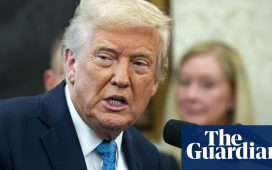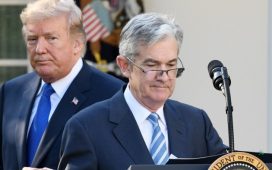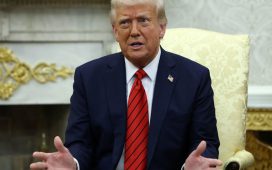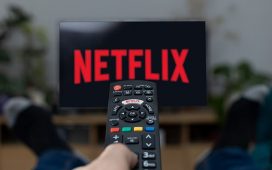Stay informed with free updates
Simply sign up to the Global Economy myFT Digest — delivered directly to your inbox.
Markets are expecting lots of rate cuts in the coming year-ish. If that’s news to you, go read Valentina’s piece from Friday, which features this groovy chart:
Naturally, this is all a corollary of seemingly tamed inflation (the consensus from Thursday’s CPI print seems to be that the US is nearly there), and the assumptions that — even if a soft landing occurs — monetary conditions are currently more restrictive than is really needed. And, naturally, these assumed cuts have unpinned the recent market rally.
Soooo . . . what if it turns out markets are wrong?
It’s a question that parts of the sell-side have started asking, and that hinges on a recursive dynamic:
— expectations of looser monetary policy are leading to looser financial conditions, potential stimulating activity
— the loosening of financial conditions is reducing the apparent need for monetary policy to actually loosen
This isn’t necessarily a stable condition — if inflation continues to drop, which it might, but might not — it could begin to make monetary policy more restrictive than intended by effectively increasing real interest rates, which might force cuts to prevent a vicious cycle.
But either way, as TS Lombard’s Dario Perkins points out, the kind of cuts markets are expecting would be unusually big without a recessionary backdrop (ok, sure, the UK might have a recessionary backdrop by the spring):
To get a larger move — consistent with what markets are pricing in — we would probably need something to spook officials into moving more aggressively. A particularly poor employment report at any point over the next few months would provide such a trigger. (People forget that this is also what happened in 1995 and that even the textbook soft landing of the mid-90s was quite “bumpy” in real time.) Of course, an economic wobble would also threaten risk assets.
But the important point is that officials would react promptly and we see no reason to expect a serious recession. (In fact, the anticipation of rapid rate cuts makes this scenario less likely, by helping to prevent a deterioration in the economy in the first place, although at some point officials will have to show they are willing to at least partly validate those expectations.)

Are emergency conditions likely to arrive? The experience of recent years has suggested that central bankers are more scared of inflation shocks than recessions — indeed, the re-emergence of new upwards price pressure dynamics on the supply side over recent weeks might be all that is needed to spur “second wave” worries.
ING’s Carsten Brzeski says he “can barely recall another time when financial market expectations and economists’ forecasts of central banks’ next steps have been so out of sync” and reckons it would take a “severe economic accident” to trigger rapid cuts of the type markets have priced in.
Admittedly, we’ve had plenty of those in recent years, but it’s harder that it has been for a while to see where one could emerge from, endogenously at least (is a supervolcano eruption endogenous?).
Moreover, says Brzeski, the personal dynamics are important here. With inflation seemingly tamed without incident, central bankers will be more susceptible than ever to the “Arthur Burns argument”:
No central banker wants to be another Arthur Burns, the Fed chairman in the 1970s who is often said to have cut interest rates prematurely, preparing the ground for a second inflation leg. Or, to put it differently, central bankers missed the inflation upswing; they now want to be fully sure of the inflation downswing and will, therefore, by definition be staying well behind the curve.
Maybe this is what entirely rational markets are currently underestimating: central bankers are only human.









